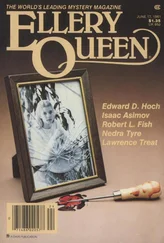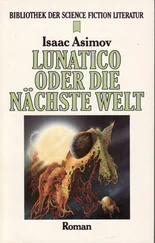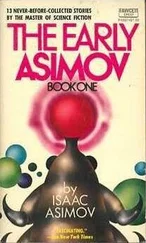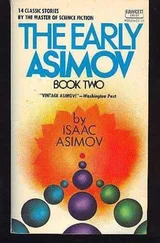Isaac Asimov - Asimov’s Guide To Shakespear. Volume 1
Здесь есть возможность читать онлайн «Isaac Asimov - Asimov’s Guide To Shakespear. Volume 1» весь текст электронной книги совершенно бесплатно (целиком полную версию без сокращений). В некоторых случаях можно слушать аудио, скачать через торрент в формате fb2 и присутствует краткое содержание. Жанр: Культурология, на английском языке. Описание произведения, (предисловие) а так же отзывы посетителей доступны на портале библиотеки ЛибКат.
- Название:Asimov’s Guide To Shakespear. Volume 1
- Автор:
- Жанр:
- Год:неизвестен
- ISBN:нет данных
- Рейтинг книги:4 / 5. Голосов: 1
-
Избранное:Добавить в избранное
- Отзывы:
-
Ваша оценка:
- 80
- 1
- 2
- 3
- 4
- 5
Asimov’s Guide To Shakespear. Volume 1: краткое содержание, описание и аннотация
Предлагаем к чтению аннотацию, описание, краткое содержание или предисловие (зависит от того, что написал сам автор книги «Asimov’s Guide To Shakespear. Volume 1»). Если вы не нашли необходимую информацию о книге — напишите в комментариях, мы постараемся отыскать её.
Asimov’s Guide To Shakespear. Volume 1 — читать онлайн бесплатно полную книгу (весь текст) целиком
Ниже представлен текст книги, разбитый по страницам. Система сохранения места последней прочитанной страницы, позволяет с удобством читать онлайн бесплатно книгу «Asimov’s Guide To Shakespear. Volume 1», без необходимости каждый раз заново искать на чём Вы остановились. Поставьте закладку, и сможете в любой момент перейти на страницу, на которой закончили чтение.
Интервал:
Закладка:
Yet is it possible the play once had a different title?
An English clergyman, Francis Meres, wrote a book in 1598 in which he compared contemporary English authors with classical and Italian ones, and, in the process, he listed Shakespeare's plays. He included one named Love's Labor's Won. This is the only play ever attributed to Shakespeare that we have no record of under the title mentioned. Either it's a lost play or we have it under a different title.
If the latter, it must be one that isn't mentioned by Meres under its own title and one that had already been written by 1598. One possibility is The Taming of the Shrew, in which Petruchio must labor hard indeed to establish love between himself and Katherina (see page I-462). There is, however, a reference in a 1603 account book to both The Taming of the Shrew and Love's Labor's Won.
The most popular theory, therefore, is that it refers to All's Well That Ends Well and to Helena's hard labor to win Bertram. But, alas, that means that the play would have had to be written several years before it was.
It's a problem that may never be solved completely, but I would like to suggest a possibility I have not seen advanced. Shakespeare may perhaps have written Love's Labor's Won in, say, 1597, and because it was a failure, rewrote it extensively and produced it as All's Well That Ends Well, with no record of the earlier version except for the casual mention of Meres, writing between the two.
… no great Nebuchadnezzar …
There is an interval before the resolution in the last act in which the Countess has the last of several confrontations with a Clown. None of these serves to advance the plot, but each is intended as comic relief. In this last, the Clown mentions "grace" and promptly expands it into wordplay by saying to Lafew:
/ am no great Nebuchadnezzar, sir;
1 have not much skill in grace.
—Act IV, scene v, lines 21-22
This equates "grace" and "grass," and Nebuchadnezzar is brought in because according to the biblical account (Daniel 4:28-37) he was punished for his arrogance by being stricken with a madness that drove him out into the fields and caused him to eat grass for seven years.
The Black Prince…
The Clown also refers to the devil as having an English name, for he is
The Black Prince, sir,
alias the prince of darkness, alias the devil.
—Act IV, scene v, lines 43-44
It is quite appropriate to speak of the devil as the "prince of darkness," for our modern conception of the devil comes, in part, from the Persian notion of a dualistic cosmic order in which the forces of light and good under Ahura Mazda fight a continuing giant battle against the forces of darkness and evil under Ahriman.
And a prince of darkness would naturally be a Black Prince like the famous eldest son of Edward III (see page II-260).
Plutus himself …
Bertram has now come back to Rousillon. When Helena reaches Marseilles, she finds that the King has gone to Rousillon and she follows. All are now converging on Rousillon for the climax.
Bertram is generally blamed by all for his treatment of Helena, but since Helena is dead, the slate is washed clean and preparations are made for a second marriage, to none other than Lafew's daughter.
A token must be given to the new bride and Bertram hands over the ring which he had (as he thought) obtained from Diana. It is really Helena's ring, however, which she obtained from the King; and the King recognizes it. Despite Bertram's denial, the King is firm in that recognition, saying:
Plutus himself
That knows the tinct and multiplying med'cine,
Hath not in nature's mystery more science [knowledge]
Than I have in this ring. 'Twas mine, 'twas Helen's,
—Act V, scene iii, lines 101-4
Plutus was the god of wealth, and was equated with gold in particular. It was believed in medieval times that there was some substance which could be used to turn less valuable metals into gold and this was called "the philosopher's stone." This same substance could also cure any disease and was "the elixir of life." Though medieval alchemists never found this substance, they were sure it existed in the earth, else how was the gold in its bowels formed?
Plutus, therefore, can be spoken of as knowing the medicine (a reference to the elixir of life) that produces gold, so that it was a "multiplying med'cine" because it multiplies the earth's store of gold.
… ever, ever dearly
The King begins to suspect that Bertram got the ring by foul play, that Helena was murdered. Bertram is arrested and suddenly Diana enters, claiming Bertram as her husband.
Desperately, Bertram tries to blacken Diana as a camp follower of the army in Tuscany, and the growing confusion is only straightened out when Helena appears, alive after all.
She shows Bertram's ring, and refers to the fact that she is now pregnant with Bertram's child. She has fulfilled Bertram's conditions and he must now accept her as his wife. Bertram cries out to the King:
If she, my liege, can make me know this clearly,
I'll love her dearly, ever, ever dearly.
—Act V, scene Hi, lines 315-16
Those are his last words in the play, and all's well that ends well.
23. The Tragedy of Othello the Moor of Venice
Of the plays included in this section, Othello is the only one to represent a major Shakespearean tragedy which will bear comparison to such plays as Hamlet, Macbeth, and King Lear. It seems to have been written in 1603, after Hamlet and before the other two.
Othello is remarkable in that its hero is a "Moor." To Shakespeare a Moor was not clearly distinguished from a black and, given the parochial feeling of Europeans of the time (and, to a large extent, since) concerning men who differed in religion (Moors) or skin color (blacks), these would serve as natural villains, with their mere difference sufficient to account for their villainy. In Titus Andronicus Aaron the Moor (see page I-401) is a villain of this sort, and in The Merchant of Venice the Prince of Morocco (see page I-520), while a valiant soldier, is scorned by Portia, who derides the color of his skin.
In Othello, however, the Moor is pictured in another fashion, as an exotic figure who exerts a powerful sexual attraction over a white girl, partly because of the wide difference between him and the men she is accustomed to. This is not so uncommon a thing. In the early 1920s Rudolph Valentine played the title role in the motion picture The Sheik and caused millions of women to swoon in ecstasy, despite (or possibly because of) the fact that he was a "Moor" and must be a Mohammedan.
The Moor, as an exotic and therefore romantic figure, was used by an Italian writer of tales, Giovanni Battista Giraldi, who wrote under the name of Cynthius. A hundred of his stories were collected into a book called Gli Hecatommithi (The Hundred Tales) and published in 1565. One of these stories begins: "There once lived in Venice a Moor, who was very valiant and of a handsome person…" No reason is given for a Moor living in Venice; no discussion as to his religion is brought out. What was needed for the story, apparently, was someone at once romantic and of a passionate southern nature.
This story was taken by Shakespeare, who kept close to many of the details of the plot.
… a Florentine
The play opens in the city of Venice (see page I-499) late at night. Two Venetians are having an earnest discussion over some point that is not immediately apparent. One of them, Roderigo, is rather petulant over what he feels to be a double cross on the part of the other, Iago.
Читать дальшеИнтервал:
Закладка:
Похожие книги на «Asimov’s Guide To Shakespear. Volume 1»
Представляем Вашему вниманию похожие книги на «Asimov’s Guide To Shakespear. Volume 1» списком для выбора. Мы отобрали схожую по названию и смыслу литературу в надежде предоставить читателям больше вариантов отыскать новые, интересные, ещё непрочитанные произведения.
Обсуждение, отзывы о книге «Asimov’s Guide To Shakespear. Volume 1» и просто собственные мнения читателей. Оставьте ваши комментарии, напишите, что Вы думаете о произведении, его смысле или главных героях. Укажите что конкретно понравилось, а что нет, и почему Вы так считаете.







